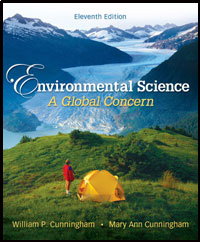1 A) half a pound B) one pound C) two pounds D) six pounds 2 A) Metal B) Paper C) Glass D) Each of these 3 A) agriculture. B) industrial. C) mining. D) municipal. 4 A) cancer. B) birth defects. C) reduced resistance to infection. D) all of the above. 5 A) compact garbage at the end of each day and cover it with a layer of dirt. B) have an impermeable layer of clay underneath the site. C) construct a drainage system to collect and monitor leachate seeping to the bottom of the waste mass. D) do all of the above. 6 A) consumer appliances and computers are dismantled and valuable materials are recovered. B) consumers are simplifying their lives and purchasing less stuff. C) products are reused over and over rather than being remanufactured from recycled materials. D) none of the above are involved. 7 A) heavy metals. B) solvents. C) synthetic organic chemicals. D) all of the above. 8 A) recycling. B) reduction of production. C) reuse. 9 A) old medicines. B) disinfectants. C) window cleaner. D) herbicides. 10 A) properties contaminated with hazardous materials that are abandoned or not being fully used. B) areas in which herbicides have accumulated in the soil such that normal plant growth is inhibited. C) urban lands slated to become waste processing facilities. D) lands that, because of geologic features, are best suited to host industries associated with handling hazardous materials. 11 A) does not seem able to fulfill its early promise. B) works but is less cost-effective than other approaches. C) offers considerable promise for cleaning up contaminated material. D) is the only fully risk-free method of decontamination devised so far. 12 A) TRUE B) FALSE 13 A) TRUE B) FALSE 14 A) TRUE B) FALSE 15 A) TRUE B) FALSE 16 A) TRUE B) FALSE 17 A) predominant in most developing countries B) common in most developed countries C) never implemented because of associated risks of groundwater pollution D) None of the above 18 A) primarily to China B) where unprotected workers break it apart to retrieve valuable materials C) as a result of a treaty that allows countries to send such waste to other countries that might benefit from the source of materials D) 1 and 2 are correct E) All of the above are correct 19 A) can be composted to produce nutrient-rich soil amendments. B) can be recycled, but only in the home C) is usually incinerated D) none of the above 20 A) Physical treatments to tie up or isolate materials B) Incineration C) Chemical processing to transform materials into non-toxic forms D) 2 and 3 are correct E) All of the above are correct





